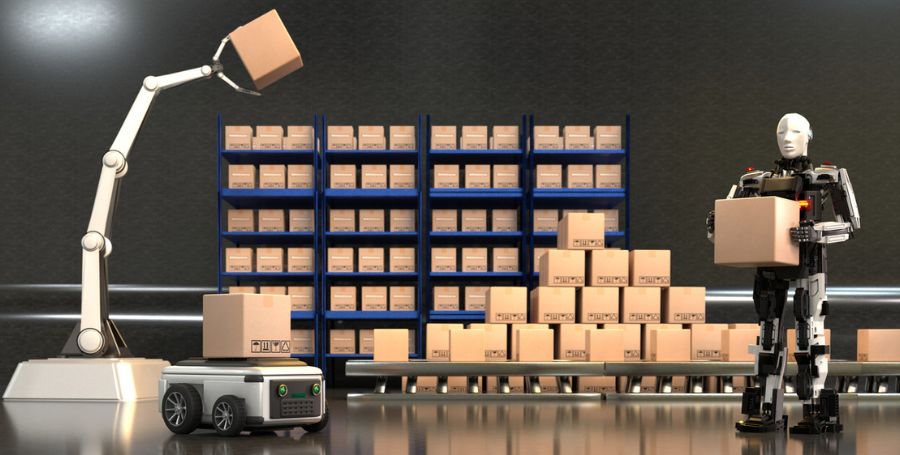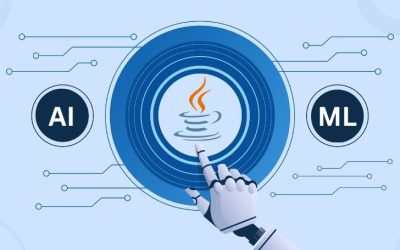In this era of Industry 4.0, the convergence of big data and artificial intelligence (AI) has resulted in a revolutionary approach to predictive maintenance. This innovative strategy’s reliance on sophisticated algorithms and the continuous flow of real-time data has fundamentally changed the way businesses monitor and manage their equipment. This article explores the significance of a significant data approach, the concept of predictive maintenance, and the role that AI plays in transforming support processes.
What is Predictive Maintenance and Why is It Necessary?
Predictive maintenance utilizes data-driven bits of knowledge to screen and break down the state of the hardware. This examination, supported by predictive support calculations, provides prescience into when upkeep should be performed, ensuring it is possible to perform it when it is important before any disappointment happens. At its center, it resembles the Virtuoso climate application for hardware.
What is Predictive Maintenance?
This approach blurs the line between prediction and forecasting. In this situation, a gauge would extrapolate the gear’s previous presentation data to demonstrate its future state. Conversely, a forecast could demonstrate an unexpected shortcoming in light of different prompt data sources.
Along with the Internet of Things (IoT), AI assumes a prime role in predictive support. IoT gadgets, basically sensors or gear, persistently feed continuous data to unified frameworks. Machine learning models and this data flow make it possible to create highly accurate predictive maintenance schedules.
For instance, consider Predictive maintenance AI for a breeze ranch, where sensors on turbines screen factors like vibration designs, cutting-edge strain, and temperature deviations. On the off chance that sensors distinguish startling vibration spikes outside of normal operating circumstances, the ML model deciphers this data to determine if such instances propose up-and-coming frustration. After the inspection, the calculation gives clear support proposals, such as advanced modifications or engine checks.
Predictive support and AI are reshaping the way that organizations work. It makes them more active, effective, and especially tough. A study by Deloitte reports that predictive maintenance lessens breakdowns by 70%, increases efficiency by 25%, and reduces support costs by 25%.
What is the Big Data Approach?
A key data approach involves collecting, managing, and examining large amounts of data to extract valuable insights and examples. In terms of predictive maintenance, this strategy relies on the continuous contribution of data from various sources, often facilitated by the Internet of Things (IoT). Sensors and tools feed ongoing data to incorporated frameworks, creating a broad dataset that fills in as the basis for predictive maintenance calculations.
Predictive Maintenance: Guaranteeing Gear Wellbeing Ahead of Time
Predictive maintenance is a proactive methodology that uses data-driven experiences to screen and break down the state of the hardware. Associations can use predictive maintenance calculations to gain knowledge of when support is needed, guaranteeing that support is performed only when it is necessary and before any potential failure occurs. It is likened to having a climate application for hardware, determining possible issues, and tending to them before they arise.
AI’s Job in Predictive Support
AI, related to IoT, assumes a pivotal part in the domain of Predictive maintenance. AI models can generate support plans that are exceptionally precise through the continuous input of data. Consider, for example, a breeze wrench, where sensors on the turbine screen detect factors such as vibration design, edge strain, and temperature changes. AI models can decipher this data and recognize designs characteristic of inescapable disappointment. Post-investigation, explicit support suggestions are given, for example, acclimations to cutting-edge points or intensive motor checks.
Advantages of Predictive Maintenance
The combination of predictive maintenance and artificial intelligence is disrupting the way organizations work.
By moving from responsive to proactive support practices, associations can upgrade productivity, limit personal time, and finally work on their core concerns.
Can AI Predict Machine?
AI’s capacity to foresee the health and performance of machines is at the core of predictive maintenance. By analyzing historical performance data and continuous contributions from sensors, artificial intelligence models can predict possible issues and suggest ideal solutions, adding to the general quality of the machine.
What can AI Predict?
AI can predict from different viewpoints connected with equipment and hardware, including but not limited to:
- Performance Trends: AI can examine verifiable execution data to anticipate future patterns, helping associations adjust for supportive exercises.
- Failure Risks: Through cutting-edge analytics, AI models can isolate characteristic designs of potential gear failures, taking active support into account.
- Schedules for Optimal Maintenance: AI can advance upkeep plans given constant data, guaranteeing that support exercises are performed at the most helpful times.
Which AI Models Drive the Future of Predictive Maintenance through Big Data Analysis?
A few AI models are utilized in Predictive maintenance, utilizing enormous amounts of information. The decision of a model frequently relies upon the particular prerequisites, the kinds of data accessible, and the intricacy of the hardware being observed. Here are some commonly used AI models in predictive maintenance:
1. AI (Machine Learning) Algorithms
- Regression Models: Linear and nonlinear relapse models are utilized to anticipate the excess valuable life (RUL) of gear given authentic execution information.
- Choice Trees: Choice trees are utilized to distinguish basic elements and choice ways that lead to hardware disappointment or upkeep prerequisites.
- Arbitrary Backwoods: Arbitrary Woodlands integrates numerous choice trees to improve prediction accuracy and manage complex datasets.
- Support Vector Machines (SVM): Using SVMs for grouping tasks makes it possible to predict whether a machine with a willing bomb falls within a certain period.
2. Deep Learning Models
- Regression Models: Profound brain organizations, including convolutional brain organizations (CNNs) and repetitive brain organizations (RNNs), are applied to highlight learning and succession examination in time-series information.
- Long Short-Term Memory (LSTM): LSTMs, a sort of RNN, are powerful for handling and anticipating groupings of information, making them reasonable for time-series examination in prescient upkeep.
- Autoencoders: Autoencoders are utilized for inconsistency recognition, distinguishing deviations from ordinary working circumstances that might demonstrate approaching disappointments.
3. Models of Ensemble
- XGBoost: XGBoost is a well-known outfit learning calculation that consolidates the forecasts of various models, improving general exactness and strength.
- AdaBoost: AdaBoost is another gathering technique that spotlights working on the exhibition of frail students, making it helpful for prescient support errands.
4. Survival Models
- Models of Weibull Distribution: Weibull Conveyance models are commonly used to examine dependence and evaluate the probability of failure at different time points.
- Models of Proportional Hazard: These models are utilized in endurance examination to anticipate the risk capability, addressing the probability of disappointment over the long run.
5. Learning through reinforcement
- Q-Learning Models: In situations where maintenance activities directly affect the well-being of gear, support learning models such as Q-Learning can be used to determine ideal support systems in the long term.
6. Clustering Algorithms
- K-Means Clustering: K-Means bunching is utilized to bunch comparable hardware or parts in light of their exhibition attributes, helping tailor upkeep systems to explicit gatherings.
- Hierarchical Clustering: Progressive grouping sorts the hardware sequentially, allowing for a more granular way to deal with maintenance arrangements.
7. Time Series Analysis Models
- ARIMA (AutoRegressive Integrated Moving Average): ARIMA models are utilized for time-series estimating and can help anticipate gear disappointments given verifiable information patterns.
The decision of the particular AI model depends on the idea of information, the ideal degree of precision, and the specific support objectives of the association.
Choosing the best model that matches your data volumes and degree of precision is an ideal task. Frequently, a blend of these models or a group approach is utilized to improve the generally prescient capacity of the framework.
How is AI Prediction Better Compared to Humans?
AI prediction separates from human mystery by its ability to quickly process gigantic datasets and recognize unobtrusive examples that could evade human spectators.
While human instincts are important, AI prediction is relentless and versatile to evolving circumstances, offering a unique way of dealing with maintenance.
Conclusion
The collaboration between AI Development Services and big data is causing changes in predictive maintenance. This allows businesses to take proactive care of their equipment, reduce margin time, and reduce support costs. As enterprises continue to embrace this creative type of advancement, the future holds the promise of significantly more useful and solid initiatives.







